Refund Guaranteed
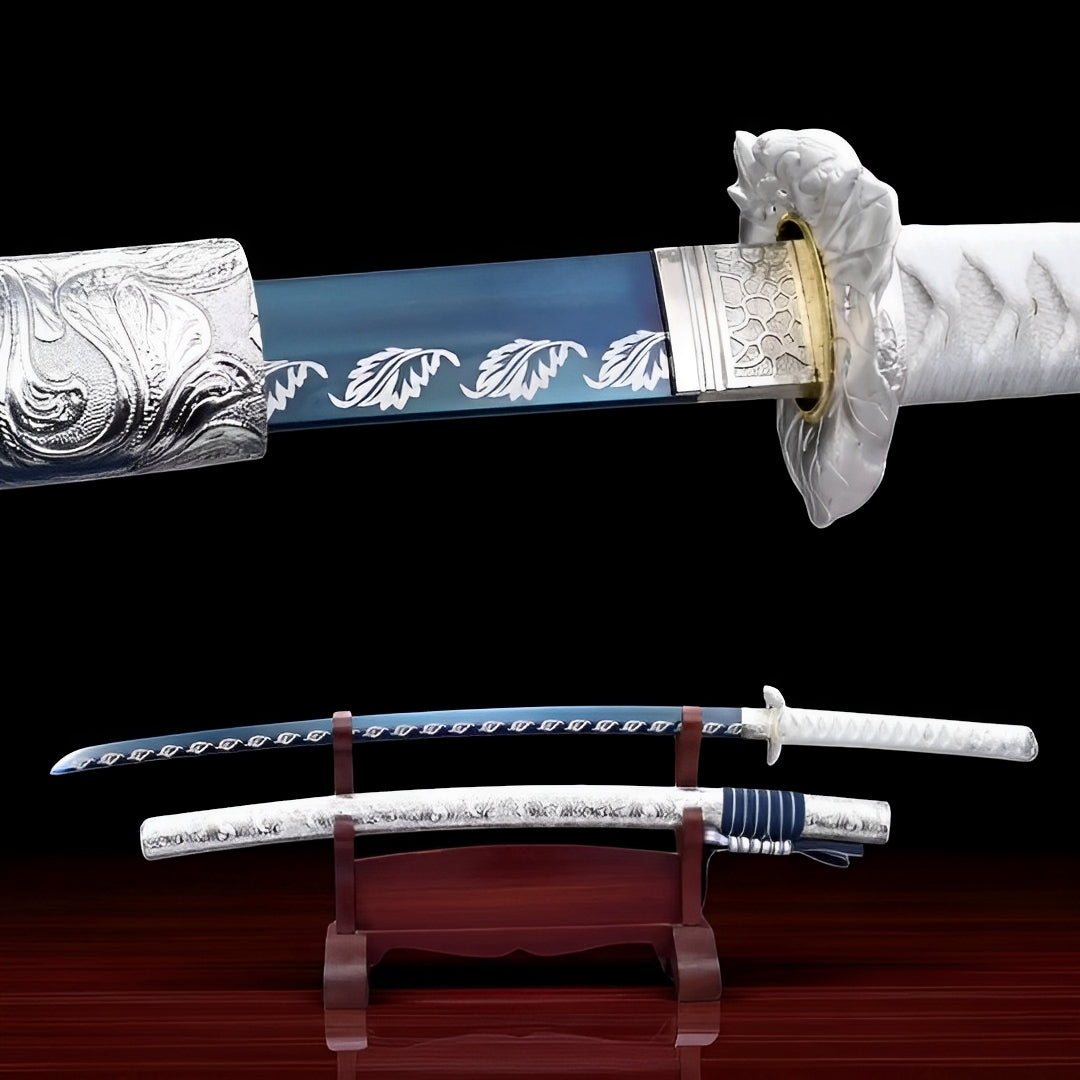
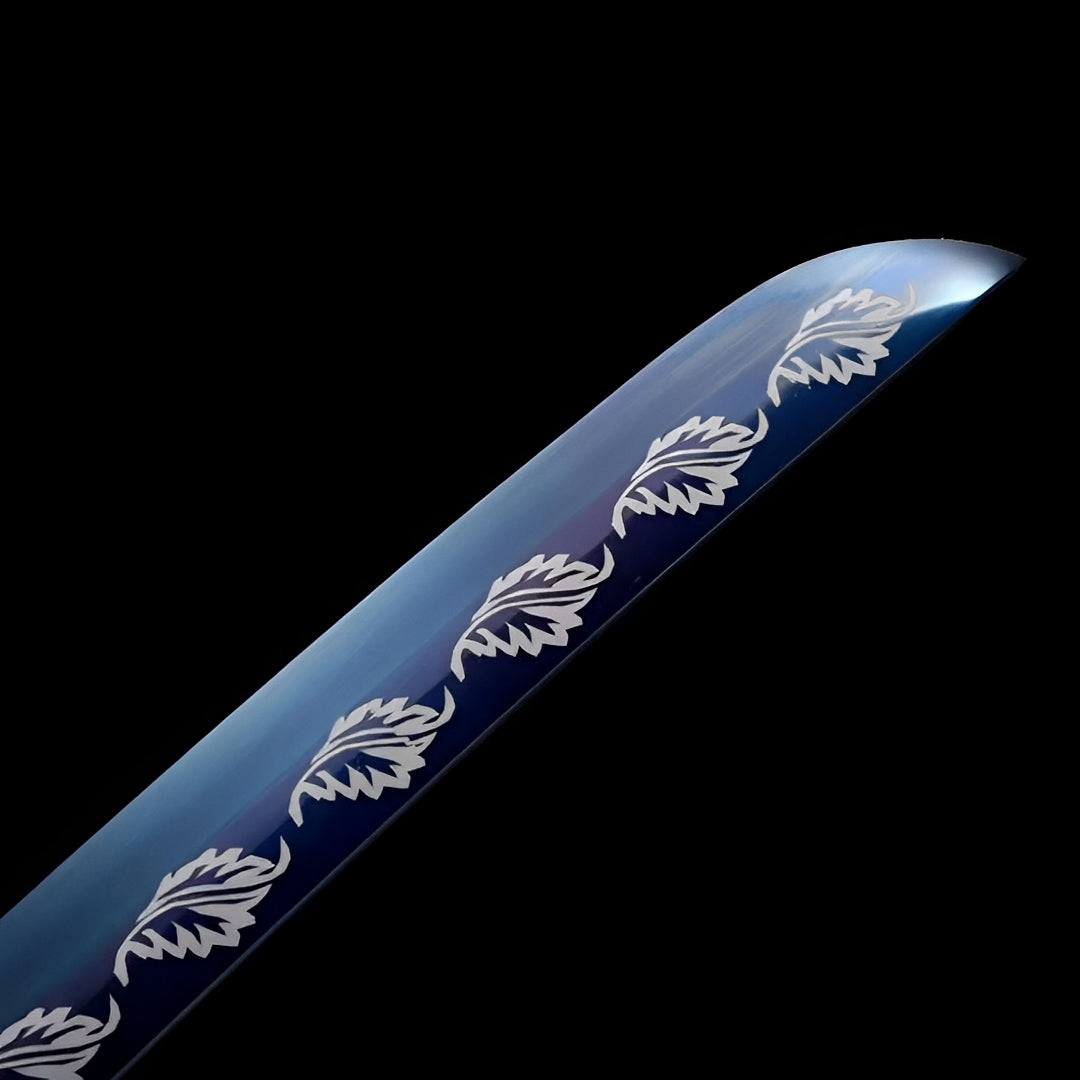
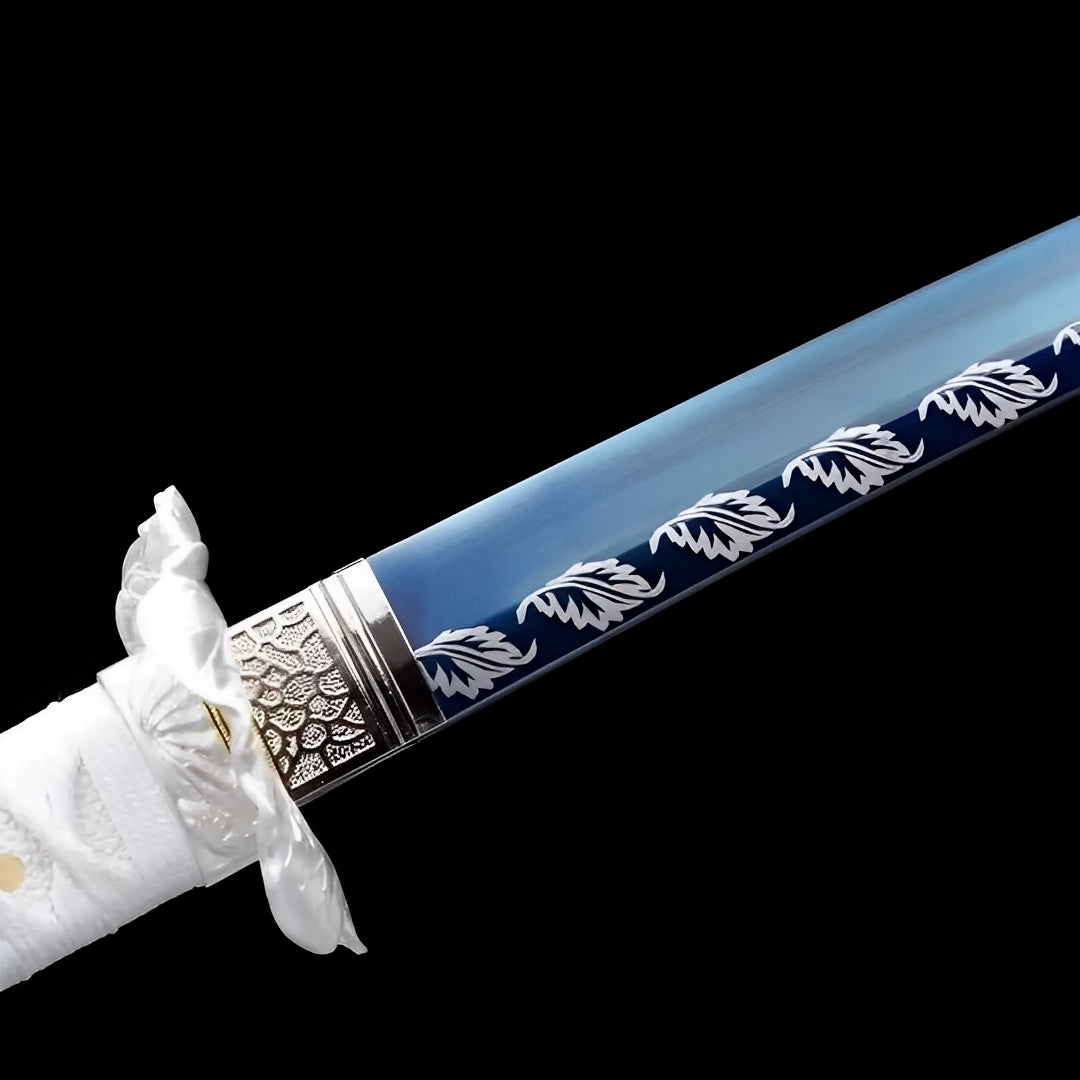
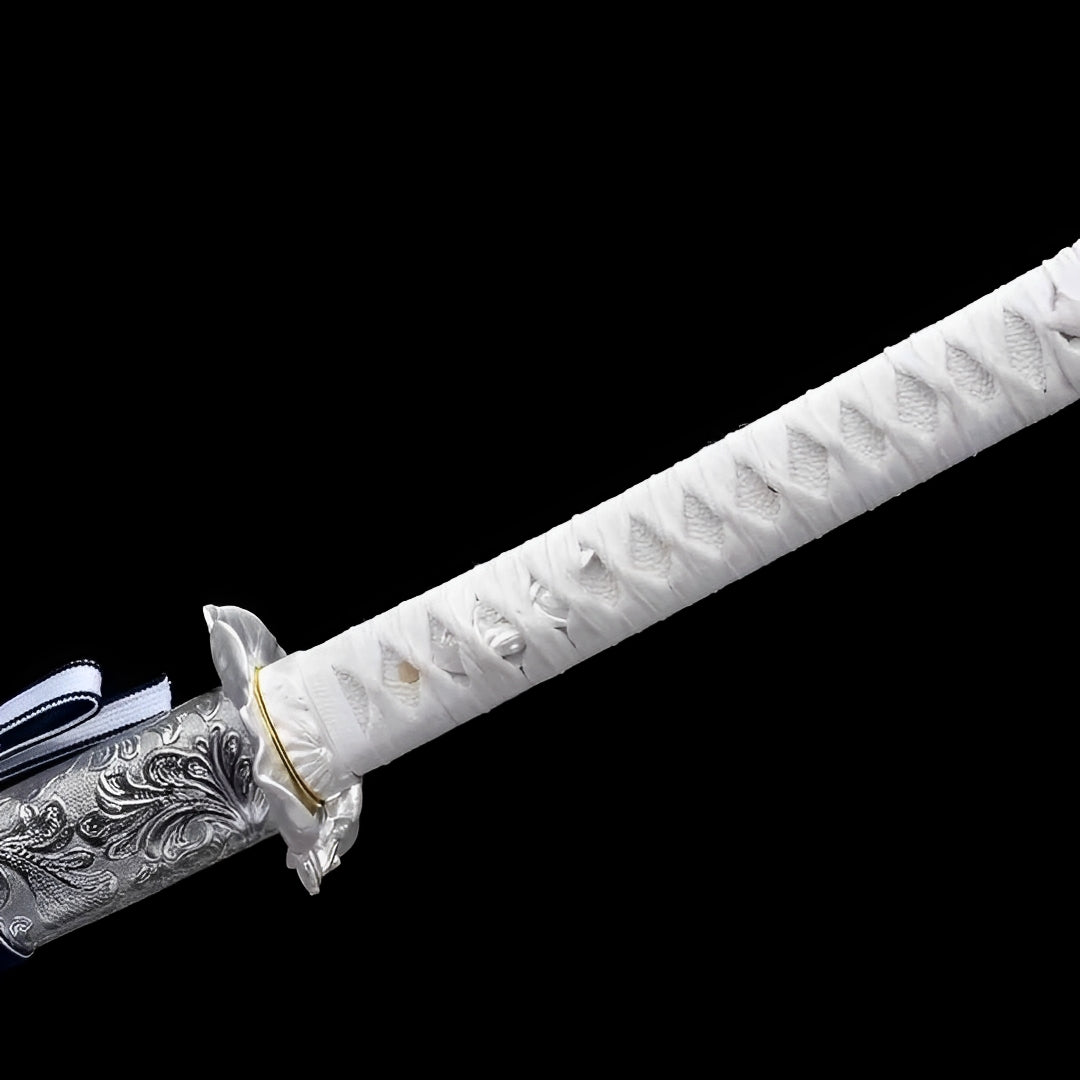
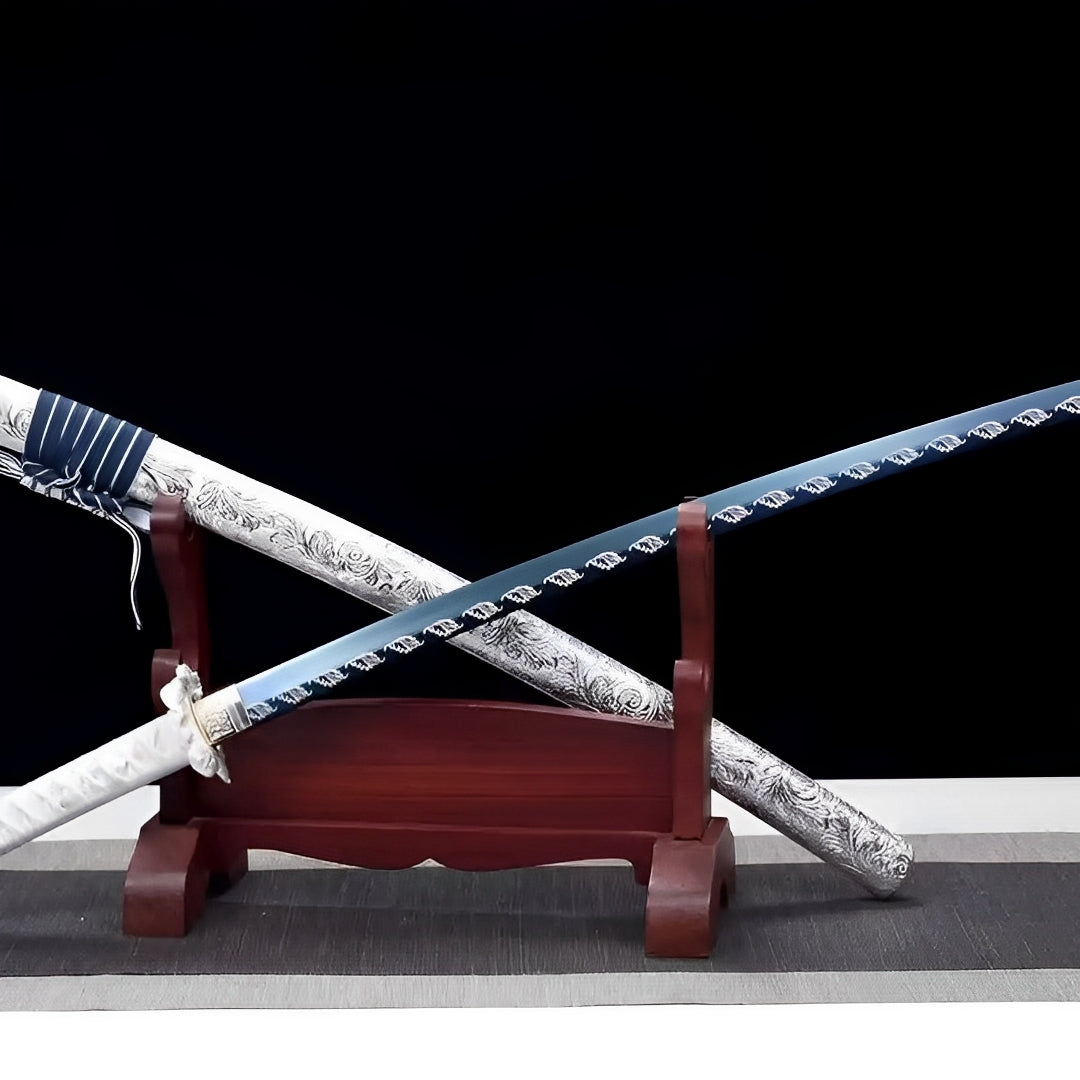
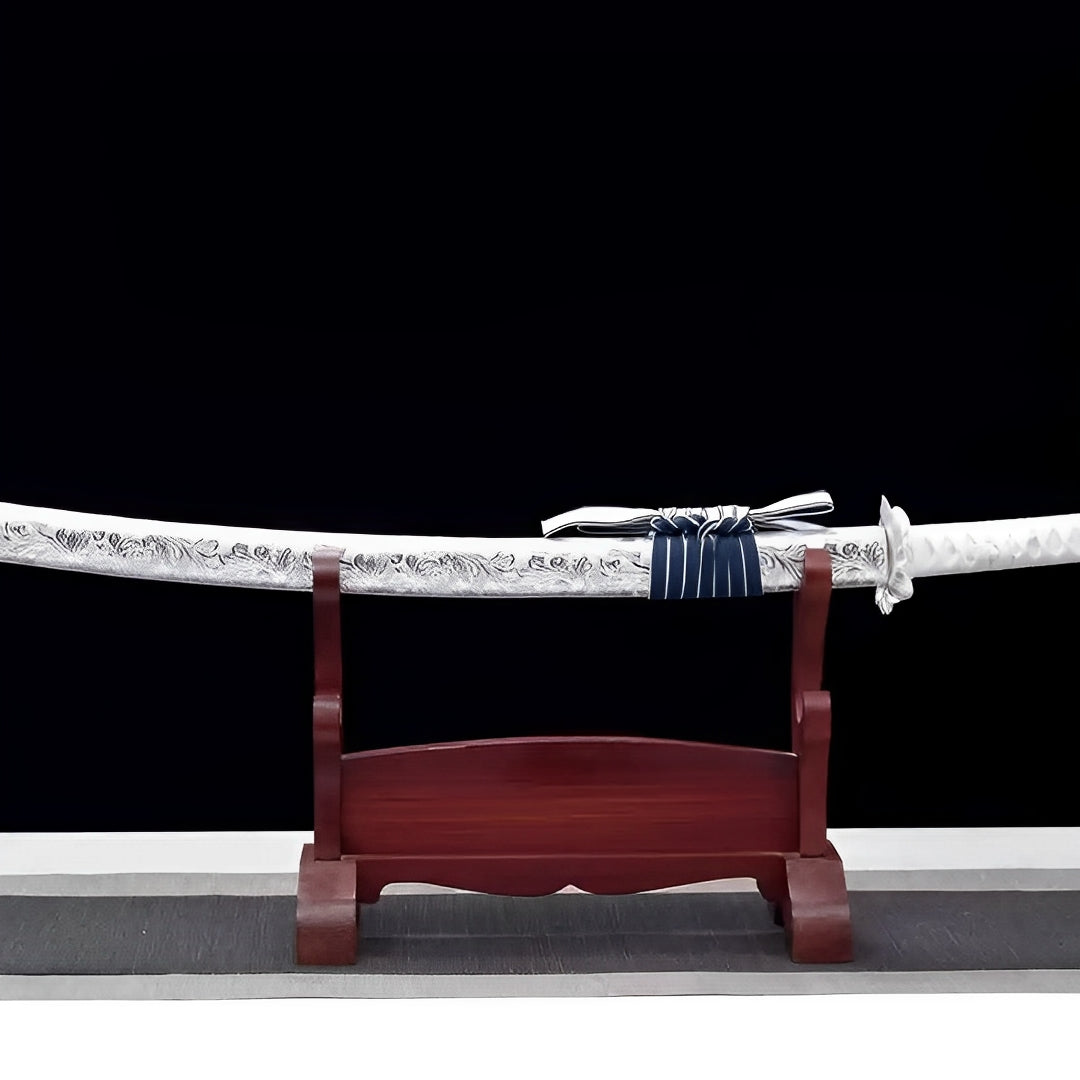
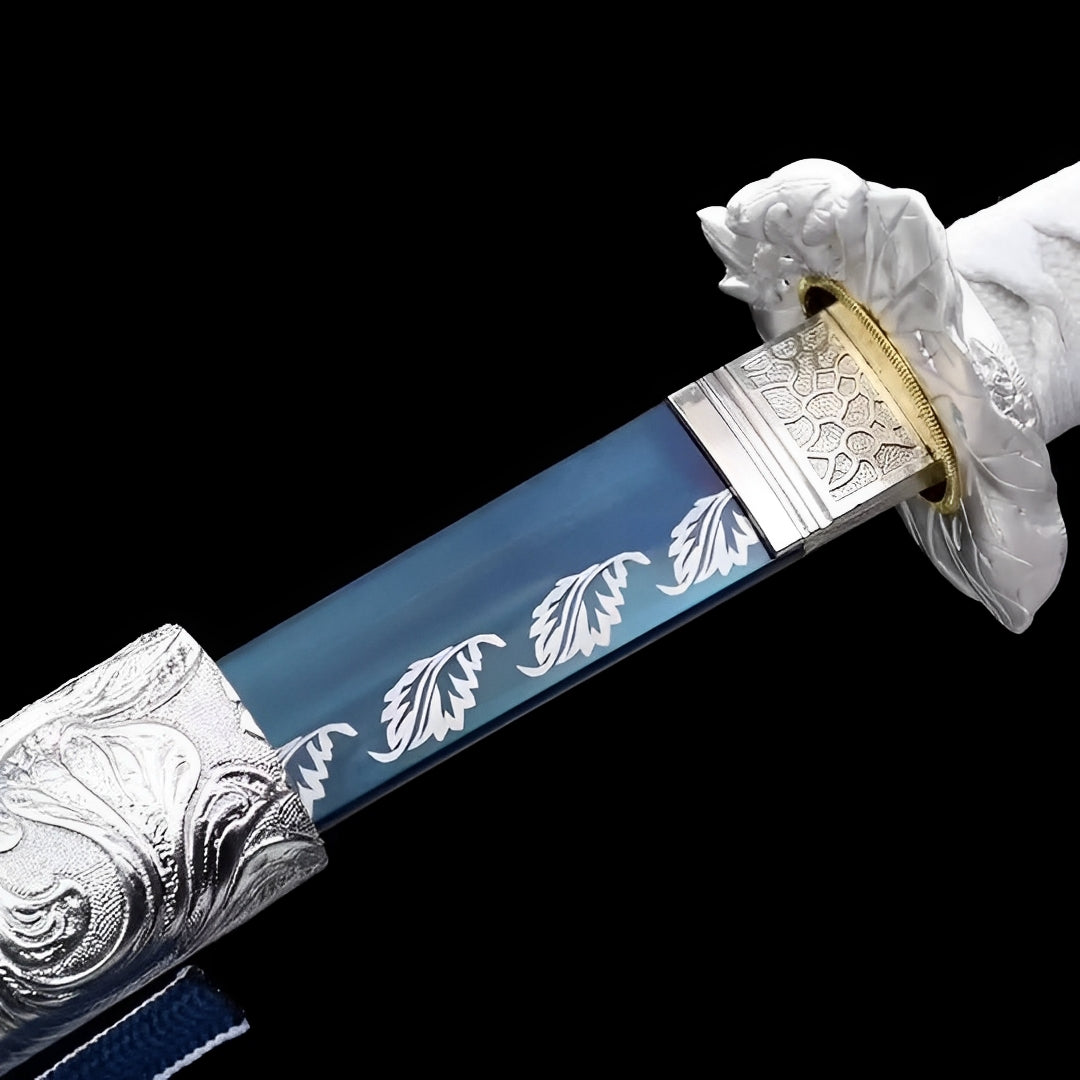
Why choose us
Ships within 48/72h
Forged Blade
Collector Quality
Trusted Globally
Inspired by Japan
Angel Katana Sword - 天使
Popular upgrades
Free Shipping over $250
No Bots, No AI
Refund Guaranteed
Free Shipping over $250
No Bots, No AI
Our team is here to help with any questions or concerns.
We’re always happy to assist you — don’t hesitate to reach out.
Why choose us
Ships within 48/72h
Forged Blade
Collector Quality
Trusted Globally
Inspired by Japan

Angel Katana Sword - 天使
Specifications
- Handmade
- SHARP
- Blade: T10 Steel
- SAGEO & ITO in Cotton
- Synthetic Rayskin
- Full Tang
- Iron Tsuba
- Total size: 105cm / 41 (in)
- Blade size: 72cm / 28 (in)
- Blade width: 3,2cm / 1.2 (in)
- Blade thickness: 0,7cm / 0.27 (in)
- Handle size: 30cm / 11.8 (in)
Angel Katana Sword - Divine Guardian Celestial Blade
Transcend earthly warfare with the Angel Katana, where steel serves heaven rather than mortal ambition. This sacred Japanese sword radiates divine protection - sculptural white tiger tsuba roars with celestial fury, pristine ivory handle suggests purity beyond corruption, while deep blue saya adorned with silver clouds invokes sky realms where angels dwell. Not weapon of destruction but instrument of divine judgment, blade carried by those believing they execute heaven's will rather than personal vendetta.
Divine Guardian Protection
The Angel Katana embodies concept of divine warriors - beings fighting evil not from human hatred but cosmic necessity maintaining balance between order and chaos. Across cultures, mythologies feature guardian figures wielding blessed weapons protecting innocent from supernatural threats ordinary steel cannot touch. This celestial katana channels that archetype through design language speaking to spiritual warfare transcending physical combat.
The name "Angel" immediately positions this blade in sacred rather than secular context. While most katana served samurai in earthly conflicts - territorial disputes, clan rivalries, political power struggles - certain legendary swords allegedly carried supernatural properties or divine blessings. Stories told of blades blessing priests wielded against demons, of swords glowing when evil approached, of weapons refusing to harm innocent even when wielded by corrupted hands.
Traditional Japanese spirituality blended Shinto animism with Buddhist philosophy, creating worldview where sacred and profane constantly intersected. Shrines housed spirit-inhabited swords, priests performed purification rituals over weapons, warriors sought divine favor through offerings before battle. The Angel Katana represents that fusion of spiritual and martial, suggesting owner fights under heaven's mandate rather than pursuing selfish goals.
The white and blue color scheme reinforces heavenly associations. White symbolizes purity, spiritual cleanliness, divine light across Asian traditions. Blue evokes sky realms, celestial spaces above earthly corruption, the infinite expanse where gods observe mortal affairs. Together these colors create palette suggesting the blade belongs not to this world but descends from higher plane.
Sacred weapon collectors recognize certain pieces transcend historical accuracy or functional design to enter symbolic territory where spiritual meaning matters more than metallurgical facts. The Angel Katana occupies that elevated space, its value deriving from what it represents - protection, righteousness, divine intervention - rather than combat effectiveness or period authenticity.
Celestial White Purity
The ivory-white handle creates striking departure from typical black or brown katana grips. This bold choice announces the blade's extraordinary nature - white shows every mark, demands meticulous care, refuses compromising with casual handling. Choosing white means committing to maintenance reflecting the purity the color symbolizes.
The navy blue ito threading woven through white base creates visual echo of the saya's deep blue, establishing color continuity unifying all components into coherent aesthetic statement. The contrasting threads also prevent pure white from becoming visually sterile, adding textural interest and practical grip enhancement.
Traditional diamond wrapping pattern executed in blue-on-white suggests clouds crossing clear sky, or celestial pathways angels traverse between heaven and earth. This interpretation transforms functional grip texture into symbolic element reinforcing the blade's divine theme.
White in Japanese culture carries complex associations - representing purity and new beginnings but also death and mourning. This duality makes white weapons particularly meaningful - they acknowledge blade's lethal purpose while suggesting wielder maintains moral cleanliness despite violence's necessity. The angel carries righteous fury destroying evil while remaining spiritually uncorrupted.
The pristine finish demands courage. Unlike forgiving darker colors hiding fingerprints and dust, white surfaces reveal every contact, every imperfection. Owners must approach the sword with reverence and care protocols befitting sacred objects rather than casual handling appropriate for mere tools.
Three-Dimensional Tiger Sculpture
The tsuba transcends typical sword guard function to become standalone artwork worthy of museum sculpture collections. The white tiger emerges in dramatic three-dimensional relief - muscular body coiling, claws extending, mouth open in protective roar. This isn't engraved decoration but fully sculptural composition where the tiger exists in actual dimensional space rather than mere surface representation.
Asian mythology reveres white tigers as celestial guardians associated with autumn, metal element, and western direction in cosmological systems. The white tiger (Byakko/白虎) ranks among four legendary beasts protecting cardinal directions alongside azure dragon, vermillion bird, and black tortoise. Warriors invoking white tiger sought its attributes: fearless courage, protective instinct, righteous violence defending innocent from predators.
The sculptural approach demonstrates exceptional craftsmanship. Creating three-dimensional forms in relatively thin metal disc requires master metalworker's skills - casting, chasing, undercutting, finishing techniques perfected over years of apprenticeship. The tiger's musculature, facial expression, dynamic posture all communicate energy and movement frozen in metal.
The white coloring connects tsuba tiger to handle's purity theme while providing visual anchor between blade and grip. The golden habaki collar sandwiched between white elements creates warm accent preventing the composition from becoming too cool or austere.
Close examination reveals incredible detail - individual claws, fur texture suggestions, anatomically accurate musculature. This attention to minutiae separates premium artistic pieces from mass-produced decorative items where details blur under scrutiny. The tiger should withstand magnified inspection, revealing craftsmanship rather than shortcuts.
Heavenly Blue Harmony
The deep blue saya suggests twilight sky transitioning from day's brightness toward night's mystery - that liminal moment when celestial realms feel closer to earth, when boundaries between mundane and miraculous thin. This isn't navy darkness but rich azure maintaining luminosity despite depth.
Silver floral patterns cascade along the saya's length like clouds drifting across evening sky or cherry blossoms falling through celestial gardens. These decorative elements reference traditional Japanese artistic motifs while reinforcing the heavenly aesthetic through their ethereal silver-on-blue presentation.
The patterns might depict actual clouds (kumo - 雲) suggesting the blade's sky realm origins, or stylized chrysanthemums (kiku - 菊) carrying imperial and noble associations, or abstract floral designs evoking paradise gardens where enlightened beings dwell. Regardless of specific motif, the silver embellishments transform functional scabbard into canvas celebrating divine beauty.
The glossy finish creates depth suggesting dimensional space rather than flat surface. Quality lacquerwork achieves this luminosity through multiple thin coats building toward mirror-like polish where light seems emanating from within rather than merely reflecting off exterior. This inner glow reinforces the sacred theme - the blade radiates divine light rather than passively receiving earthly illumination.
The color harmony between blue saya and blue handle threading creates unified composition where every element relates to the whole. This design sophistication prevents the piece from feeling assembled from mismatched parts, instead presenting as conceived totality where each component serves the overall vision.
Sacred Collection Piece
This divine katana attracts collectors seeking pieces transcending mere weaponry to enter spiritual and symbolic territories. The angel theme provides universal appeal - protective divine forces appear across global religions making this accessible even to collectors unfamiliar with specific Japanese spiritual traditions.
The dramatic white tiger tsuba alone justifies acquisition for sculpture enthusiasts regardless of sword interest. Display the blade partially unsheathed highlighting the tsuba's three-dimensional mastery, essentially presenting functional guard as standalone art object deserving focused appreciation.
The celestial aesthetic works magnificently in varied contexts. Modern minimalist spaces appreciate the clean white-and-blue palette. Religious or spiritual rooms welcome the sacred symbolism. Even traditional Japanese displays embrace the piece through its connection to classical four beasts mythology and guardian iconography appearing throughout Asian art history.
Lighting considerations matter enormously. Dramatic spotlighting brings out the tiger sculpture's dimensional depth while making silver patterns gleam against blue background. Natural light creates different effects throughout day as sun angles shift, the blade essentially performing slow transformation revealing different aspects based on illumination conditions.
Perfect for collectors specializing in mythological weapons across cultures, spiritual or religious artifact enthusiasts, Asian guardian beast collectors building sets representing all four cardinal protectors, martial artists viewing swords as more than tools but as spiritual discipline manifestations, or anyone understanding that certain objects serve as physical anchors for abstract concepts like protection, purity, and divine intervention.
The Angel Katana particularly appeals to those who've collected historical and practical pieces and now seek permission embracing overtly symbolic designs, who appreciate craftsmanship extending beyond functional requirements into artistic expression, who believe collections should include pieces making spiritual statements alongside technical demonstrations.
Care Instructions: Handle white surfaces with clean hands or cotton gloves - oils show immediately on ivory finish. The blue saya benefits from gentle cloth wiping maintaining glossy brilliance. Polish silver patterns carefully preserving their contrast against blue background. The sculptural tsuba requires soft brush cleaning reaching into relief details. Standard blade care applies. Display away from direct sunlight preventing white discoloration. The sacred theme demands reverent maintenance befitting divine artifact.
Walk with angels. The Angel Katana guards those deserving protection.
Legal Disclaimer
By purchasing from Katana Corp, you acknowledge and agree that:
- You are at least 18 years of age (or the age of majority in your jurisdiction).
- You are solely responsible for verifying and complying with all local laws and import regulations before placing an order.
- Some countries prohibit the importation of swords entirely. Katana Corp is not responsible for orders delayed, seized, or refused by customs authorities.
- All katanas and related products are sold strictly as decorative and display items. They are not intended or certified for combat use.
- Depending on the jurisdiction, swords may legally be considered bladed weapons, subject to specific restrictions or prohibitions.
- Katana Corp disclaims all liability for any injury, damage, or legal consequences resulting from misuse, abuse, or unlawful use of its products.
For full details, please refer to our Terms of Service.
Care & Maintenance
To maintain your katana's appearance and performance over time, we recommend:
- Regularly wiping the blade with a soft cloth to remove fingerprints and moisture.
- Applying a light coat of choji oil to prevent rust (for carbon steel blades).
- Storing the sword in a dry place, preferably inside its saya.
- Avoiding direct contact with hard surfaces to preserve sharpness and finish.
For more care tips, check our full maintenance guide in the FAQ section.
Behind the Blade
Every katana we offer carries the essence of centuries-old craftsmanship.
More than just a weapon, the katana symbolizes discipline, honor, and mastery.
Our artisans draw inspiration from traditional forging methods to ensure each blade reflects the spirit of the samurai — strength, precision, and soul.
Owning one is not just about aesthetics — it’s about carrying a piece of that legacy.
User Experience
This katana is designed to offer a perfect balance between blade and handle.
Its ergonomic tsuka (handle) allows a secure two-handed grip, while the weight distribution ensures smooth, fluid movement.
Whether for training, display or cutting practice, handling feels natural and precise.
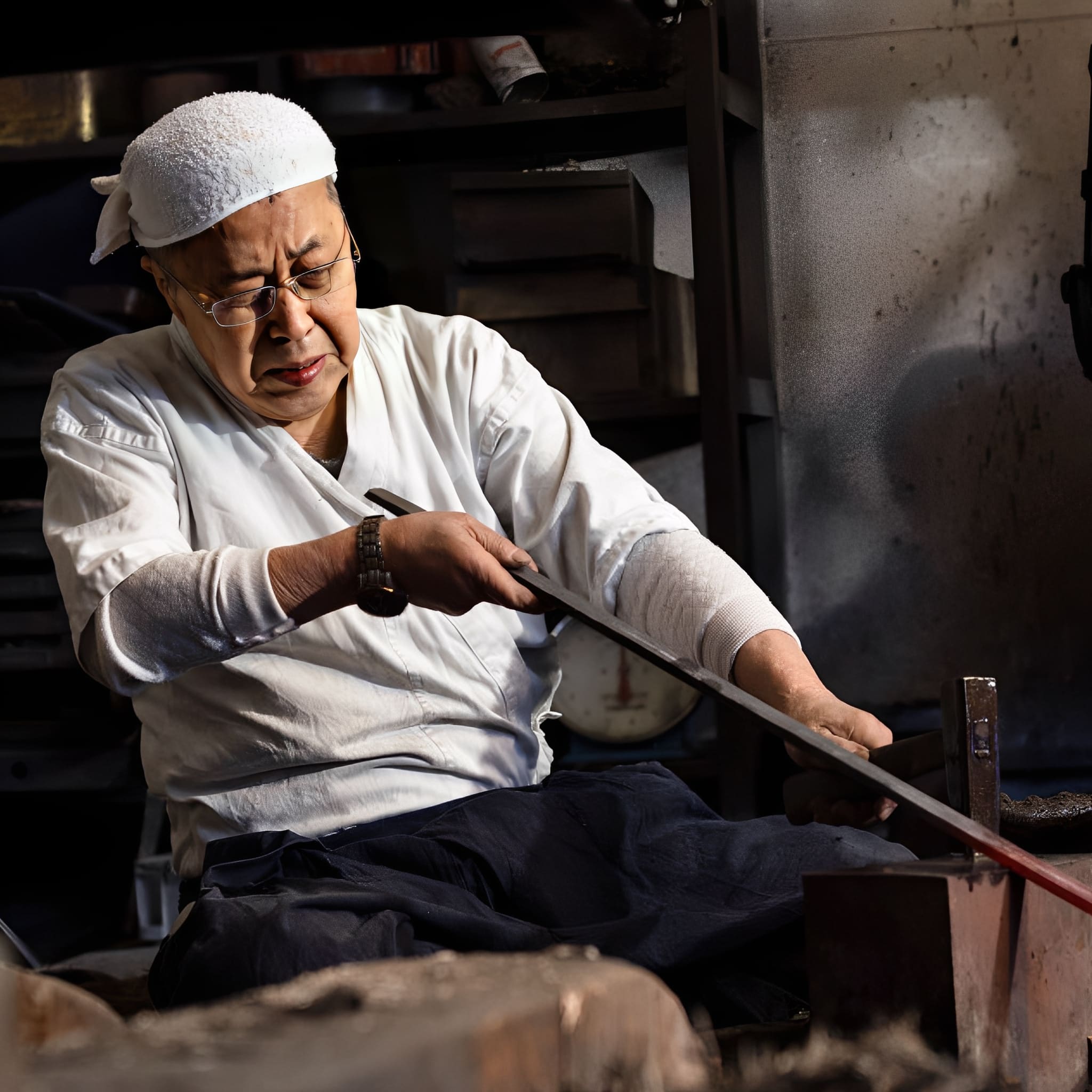
The Art of Traditional Forging
Each katana we craft is born from centuries of samurai tradition.
Our master smiths shape every blade by hand, folding the steel to achieve unmatched strength, flexibility, and beauty.
This time-honored process is not just about creating a weapon? it’s about preserving a legacy of discipline, honor, and artistry.
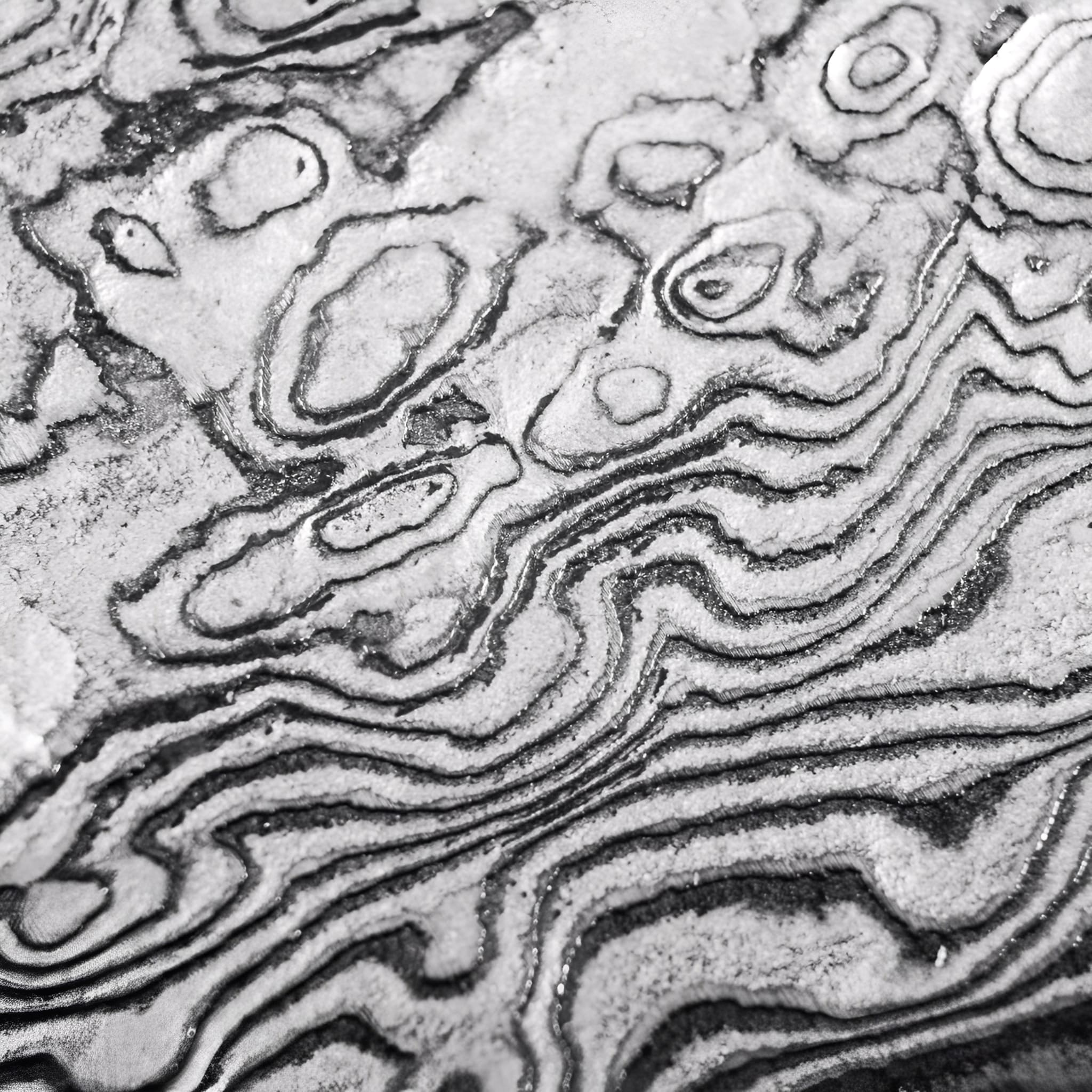
Materials Chosen Without Compromise
We select only the highest-grade steels and authentic fittings to ensure every katana is both a masterpiece and a reliable companion.
From the flawless hamon line to the perfectly balanced tang, each detail is carefully inspected to meet the highest standards of performance and aesthetics.
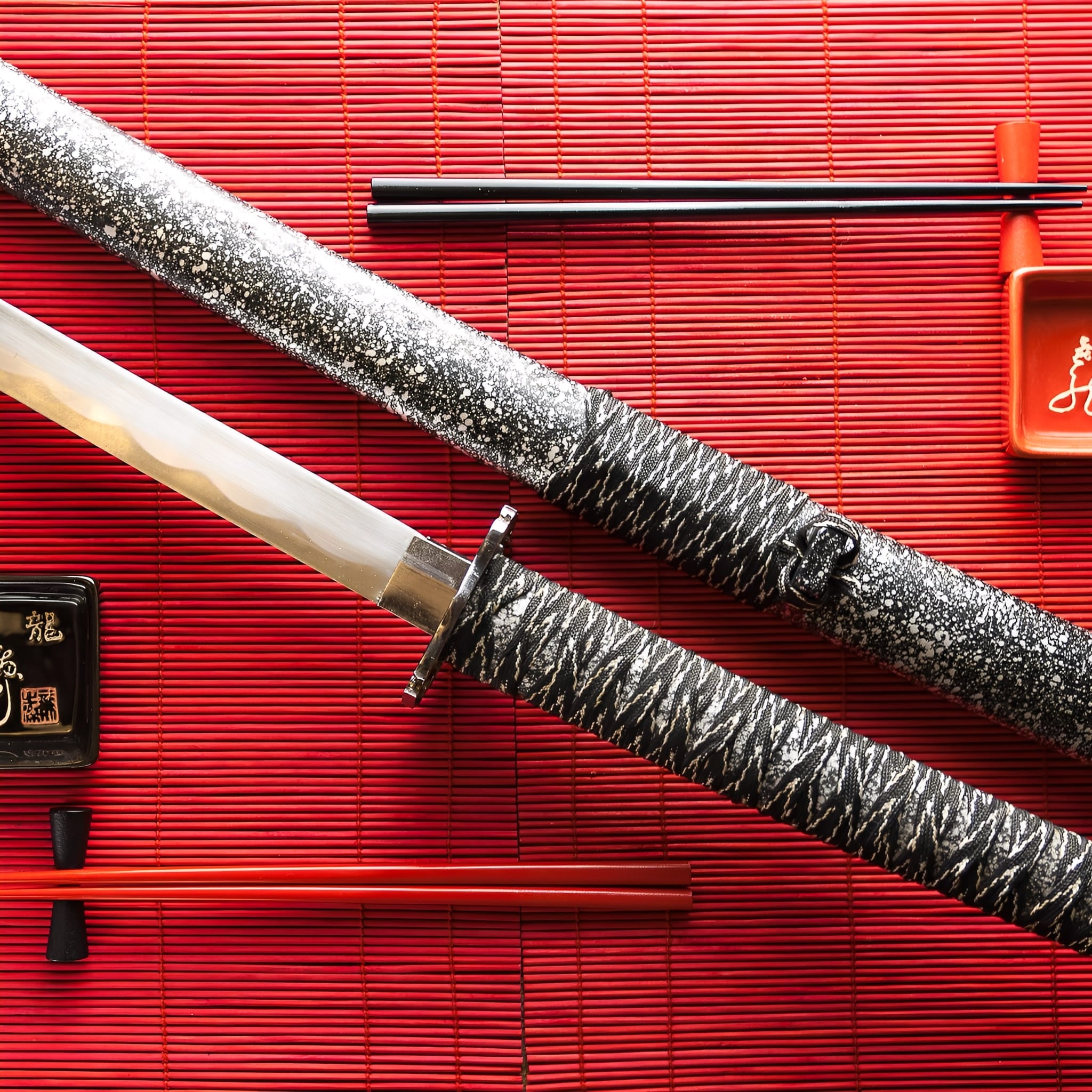
More Than a Sword, A Lifelong Legacy
Owning a handmade katana is an experience that goes beyond the blade itself. It’s holding history, tradition, and craftsmanship in your hands.
Whether displayed as a work of art or wielded with precision, your katana will stand as a symbol of timeless skill and dedication for generations to come.
-
Key Destinations
United States: 5–7 days
Canada: 5–7 days
Australia: 6–9 days
Denmark: 4–6 days
Netherlands: 3–5 days
Sweden: 4–6 days
Switzerland: 3–5 days
Finland: 5–7 days
Singapore: 6–8 days -
Central European Partners
France: 2–3 days
Germany: 3–5 days
Spain: 4–6 days
Italy: 4–6 days
Belgium: 3–5 days
Austria: 4–6 days
Ireland: 4–6 days
Poland: 4–6 days
Portugal: 4–6 days -
Extended EU Network
Czechia: 4–6 days
Hungary: 4–6 days
Slovakia: 4–6 days
Slovenia: 5–7 days
Romania: 5–7 days
Bulgaria: 5–7 days
Croatia: 5–7 days
Serbia: 5–7 days
Estonia: 5–7 days
Latvia: 5–7 days
Lithuania: 5–7 days
Luxembourg: 3–5 days
Greece: 5–8 days -
FAQ’s
Visit our FAQs page to find answers to common questions.

